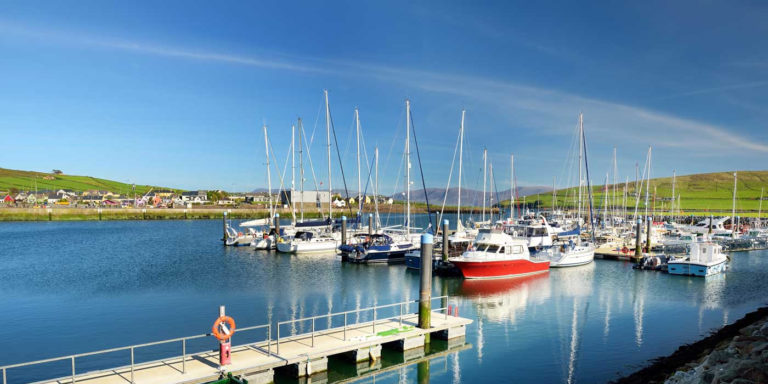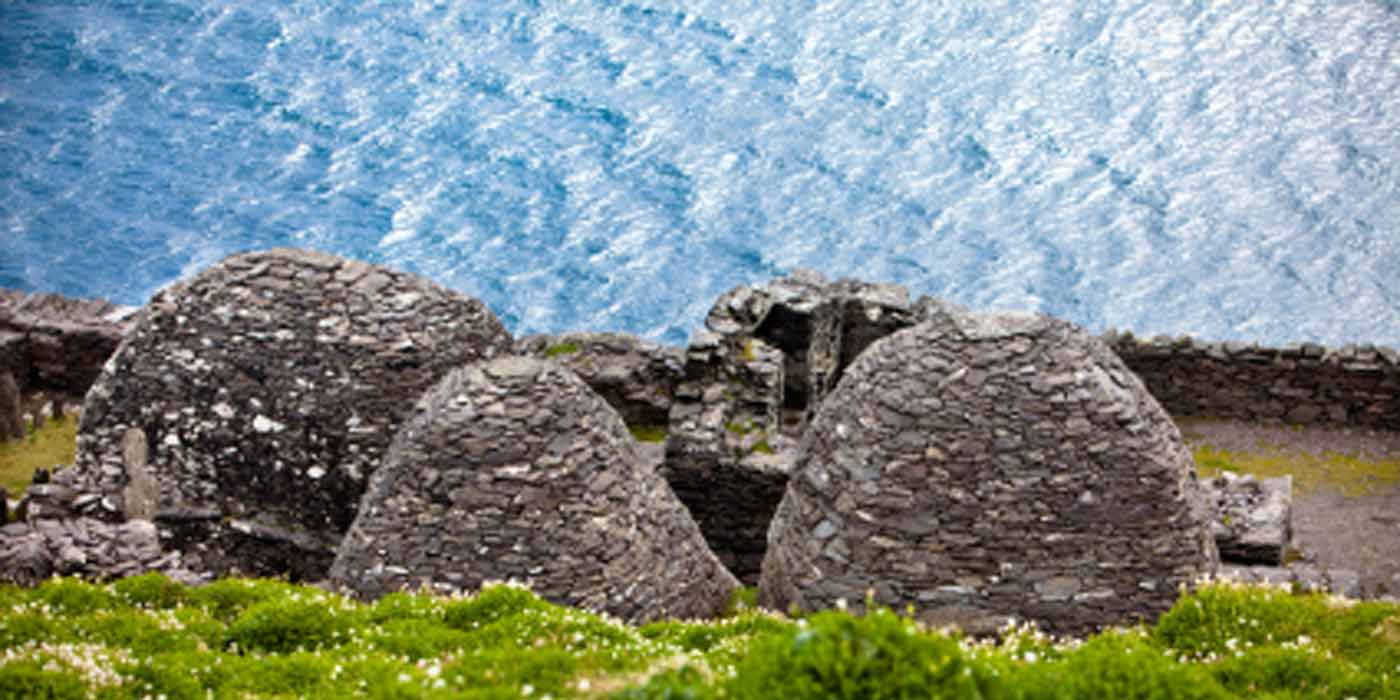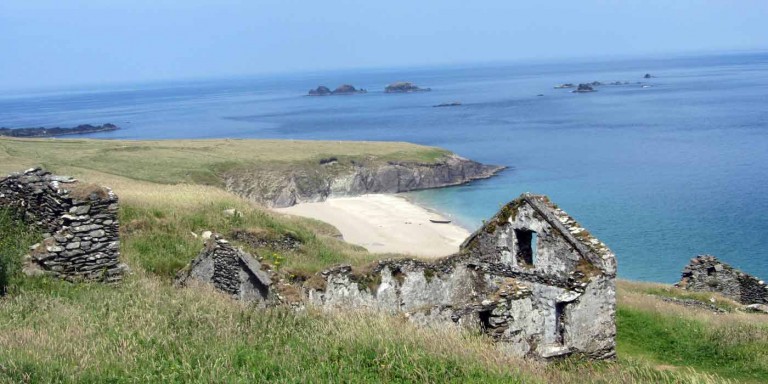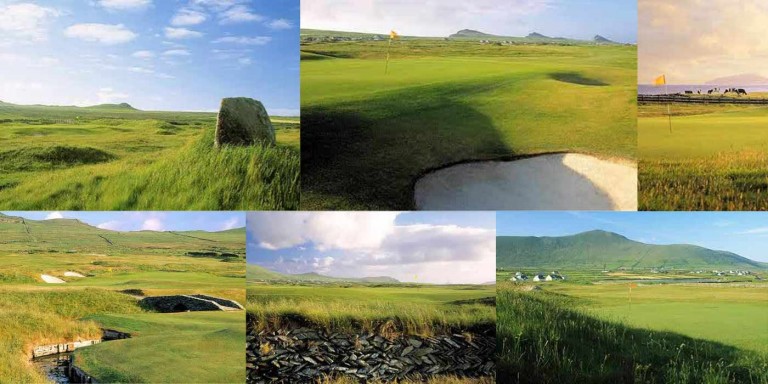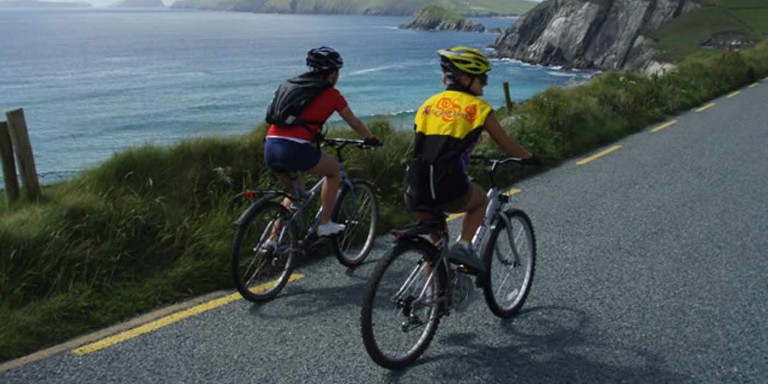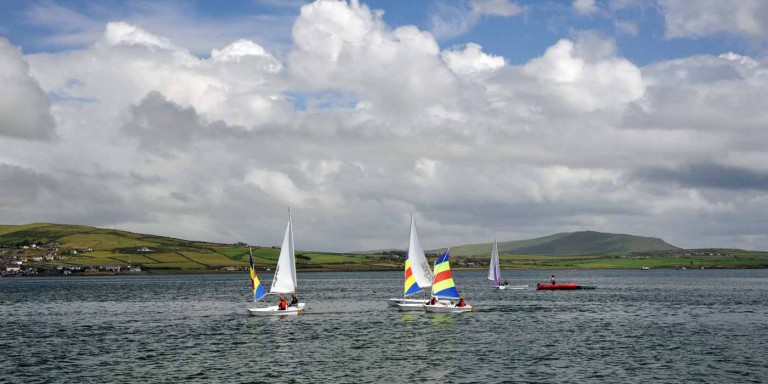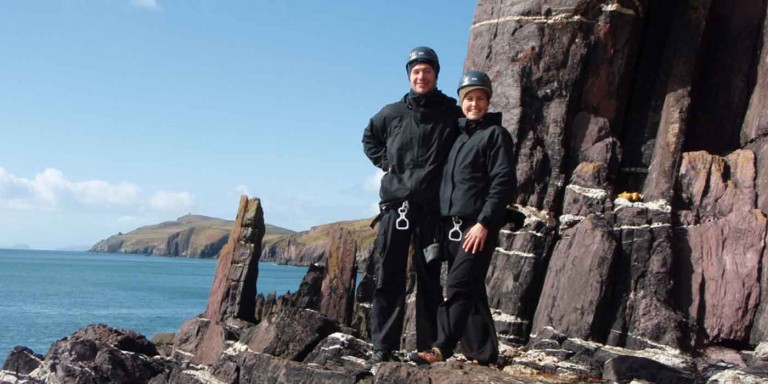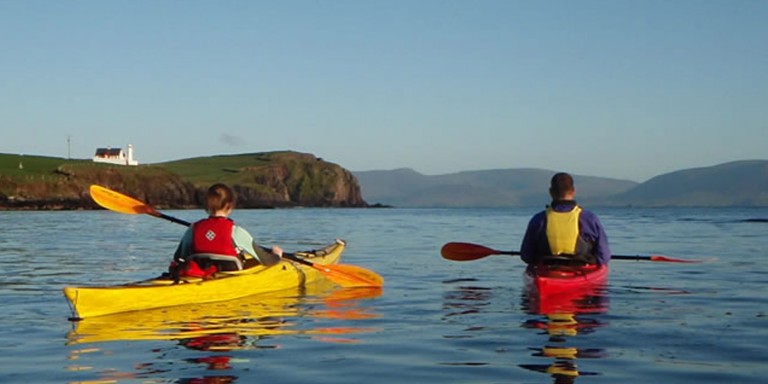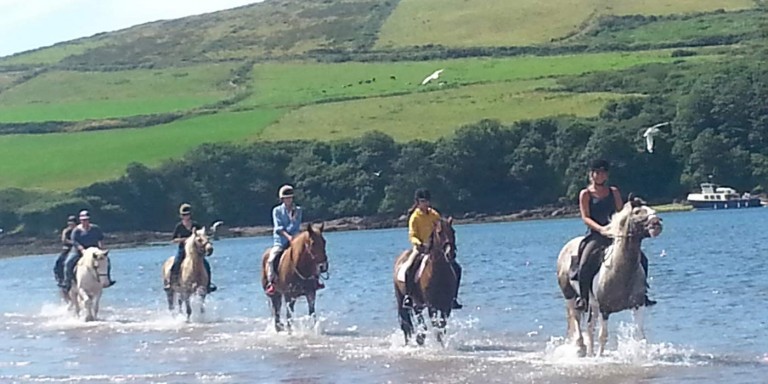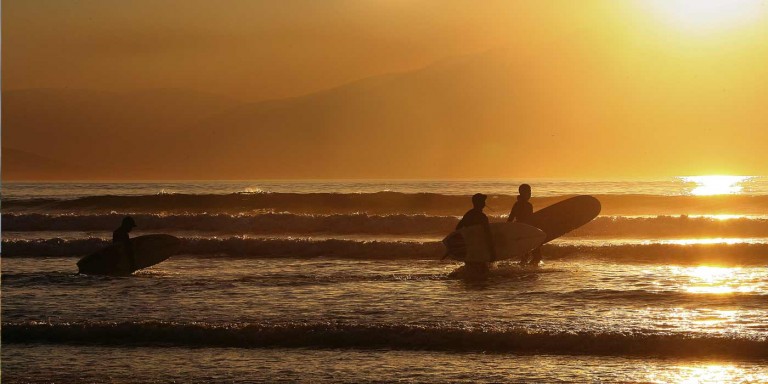Historic Sites
of the Dingle Peninsula
Historic sites
Trace the area’s rich history.
Cill Mhaolcéadair.
This ruined church was built around the year 1140. There is a fine Romanesque doorway featuring magnificent moulding and a carved figurehead said to represent the founder of the church, Inside the church is the famous Alphabet Stone and it is thought that it was used to teach Latin to students. Outside the church is a stone called An Clog Gréine or Sundial it is highly ornamented on the back and the front.
Gallarus.
A visit to Gallarus oratory is a must to see this wonderful early Christian prayer cell built entirely of dry stone in a distinctive corbelling fashion. It dates from sometime in the 7th century and is the oldest surviving place of Christian worship in Europe
Dunbeg fort.
This clifftop fortificationwas occupied at intervals spanning 2,000 years, most likely during times of danger. It was defended by a series of five fosse lines (ditches) four banks and a large stone rampart. Over the years the Atlantic has taken its toll and has eroded probable half of the orginal fort.
Fahan Beehive Huts.
These dry stone beehive huts were common as family homes in these parts up to the 18th century. They are built without any mortar and were watertight. Many believe that they were also used as a resting place for pilgrims en route to Cnoc Bhréanainn
Riaisc.
Provides a wonderful example of an early Christian site, the site was excavated in the early 1980s, resulting in the finding of six decorated pillar-slabs, another six had already been known. There is a foundation of an oratory similar in design to Gallarus, and from excavations it was apparent that it was built over earlier burials dating about 400A.D.
Minard Castle.
This castle which is situated high on the cliff face, had a short life of less than a hundred years as it was surrendered to and blown up by the Cromwellians in 1650, it is a three storey building but it may have had a fourth storey. This is where the Irish explorer Tom Crean who was born in Gortacurraun, Annascaul enlisted shortly before his 16th birthday to the Royal Navy.
The Blasket Islands
The Great Blasket was the largest of a group of small islands lying off the south-west coast of Ireland. An Irish-speaking fishing community [c. 200 pop.] lived on the island, where there were no doctors or policemen, no post-office or shops or bars. During the winter months the island was completely cut off from mainland Ireland. Finally the last people left in 1953.
Today the Great Blasket Island is known throughout the world as it spawned a number of great Irish writers – Peig Sayers, Tomás Ó Criomhthain and Maurice O’Sullivan among others. None of the writers had more than a basic primary education and yet their works have been translated into many languages. They are chiefly known through English translations of their works.

